John Diefenbaker – Saskatchewan’s Prime Minister
John Diefenbaker was, with the possible exception of Pierre Trudeau, just about the most polarizing Prime Minister in Canadian history. Dief the Chief, as he was often referred to in the press, was, at the same time, a great orator and an occasional babbling fool. It took the electorate five times to finally give the guy a seat in any type of government. Then he went on to win the largest landslide victory in Canadian history up to that time, only to fritter it away after one full term. Like Winston Churchill, he had to be in the limelight and eventually overstayed his welcome, becoming a figure of pity during his latter days in Parliament. Now, some 32 years after his death, it is time to make unbiased evaluations of his legacy (well maybe not, for reasons I’ll explain). My wife Alison and I have come to John Diefenbaker’s adopted and beloved province, Saskatchewan to seek out that legacy. Won’t you read along to learn more about this mercurial man?
Alison and I both have our personal memories of John Diefenbaker, so I’ll start with those. Alison’s mother is a died in the wool life long Conservative with a capital C. At age four she took Alison to see John Diefenbaker as he stumped in New Glasgow, NS on the last true whistle stop campaign in Canadian history. His oratory and flourish left an indelible imprint on her memory. While Alison saw Dief in his prime, I met him many years later as he entered the Halifax Public Gardens, campaigning arm in arm with Premier John Buchanan. Although he was quite frail he still had a twinkle in his eye and a firm handshake. I also frequently heard from my grandmother of the enmity between Diefenbaker and my grandfather who was a life long Liberal with a capital L. They were rivals in the Commonwealth Bar Association and apparently their loathing was mutual. So this is a man who touched both our lives in more than a passing manner.
Lake Diefenbaker
Rather than set out a history of John Diefenbaker, I will relate it as we visit various sites in Saskatchewan to which he is linked. The first may not seem to have a direct connection, but is an example of the esteem in which he is held by the people of Saskatchewan. Lake Diefenbaker is the largest lake in south Saskatchewan and the focus of much of the outdoor activity in the province. With over 500 miles of shoreline it has become the go to place for vacationers from all parts of the province. It is a reservoir created by damming the South Saskatchewan and Qu’Appelle Rivers and didn’t exist until the 1960’s. The fact that the people of Saskatchewan chose to name it after John Diefenbaker is telling. When, in 1994, the CBC set out to find the Greatest Canadian, the winner was a politician from Saskatchewan, but it wasn’t Dief. Tommy Douglas, premier of Saskatchewan for 17 years and the father of socialism in Canada, was the winner. Diefenbaker didn’t even make the top 10. So the fact that the most important water resource in Saskatchewan is named after Diefenbaker and not Douglas is notable.
My son Dale and I were near the end of a week long RV trip in southern Saskatchewan and headed to Saskatoon to pick up Alison and his spouse Cari at the airport. Visits to Grasslands National Park and Fort Walsh in the Cypress Hills were just two of the many highlights of the trip to Saskatchewan so far.
We stopped overnight at Danielson Provincial Park which is a real beauty right on the shores of the lake near the Gardiner Dam. Despite the fact it was raining, that didn’t stop Dale from spending a few extra hours out on the lake paddle boarding, one of about a gazillion things you can do on the lake.
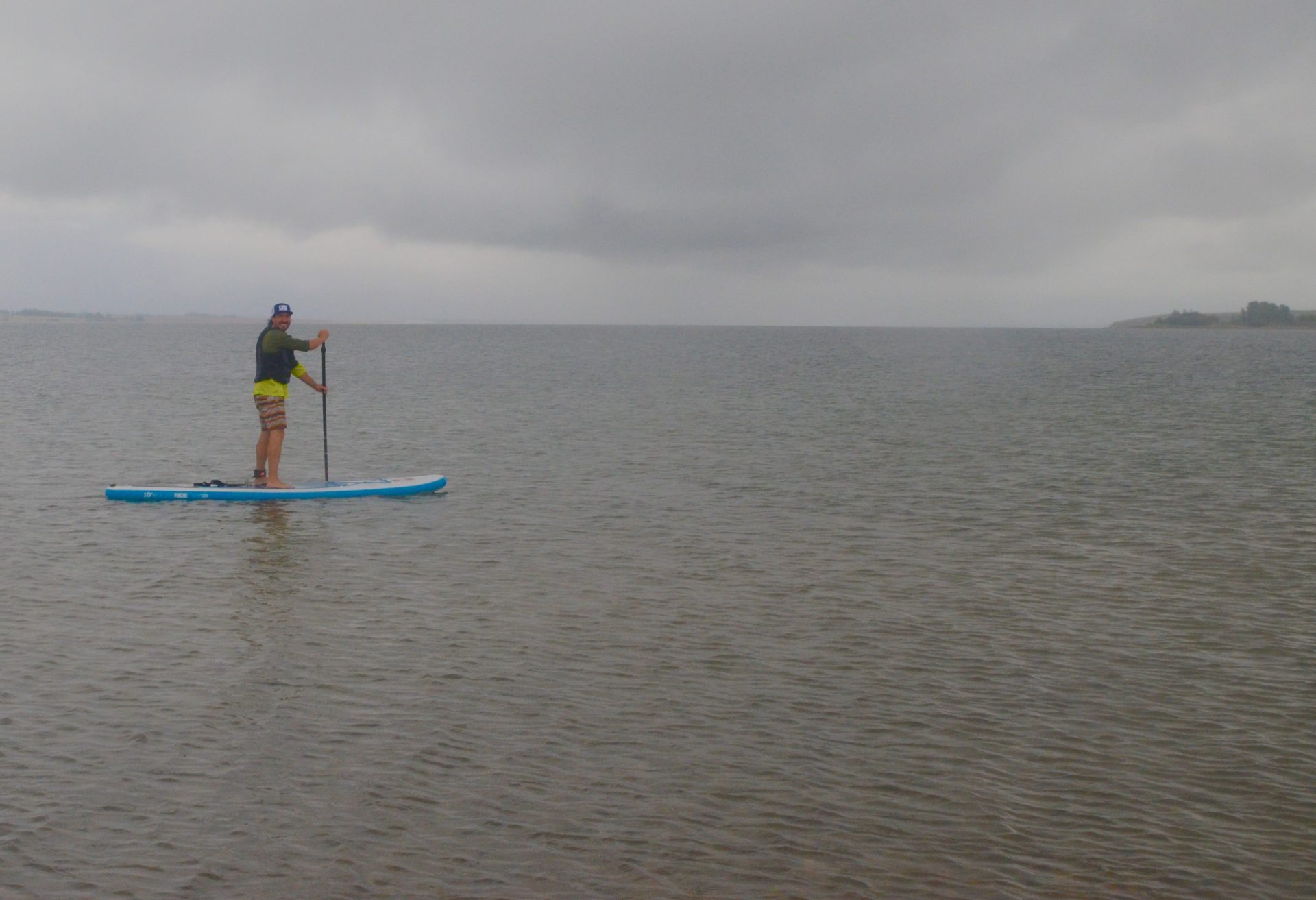
John Diefenbaker House, Prince Albert
After picking up the ladies we headed to the fair city of Prince Albert which was John Diefenbaker’s home for most of his life. Our first stop was at the house he lived in for most of his political career, which he donated to the public after his death. Here is Alison in front of the modest home on 10 River Street East.
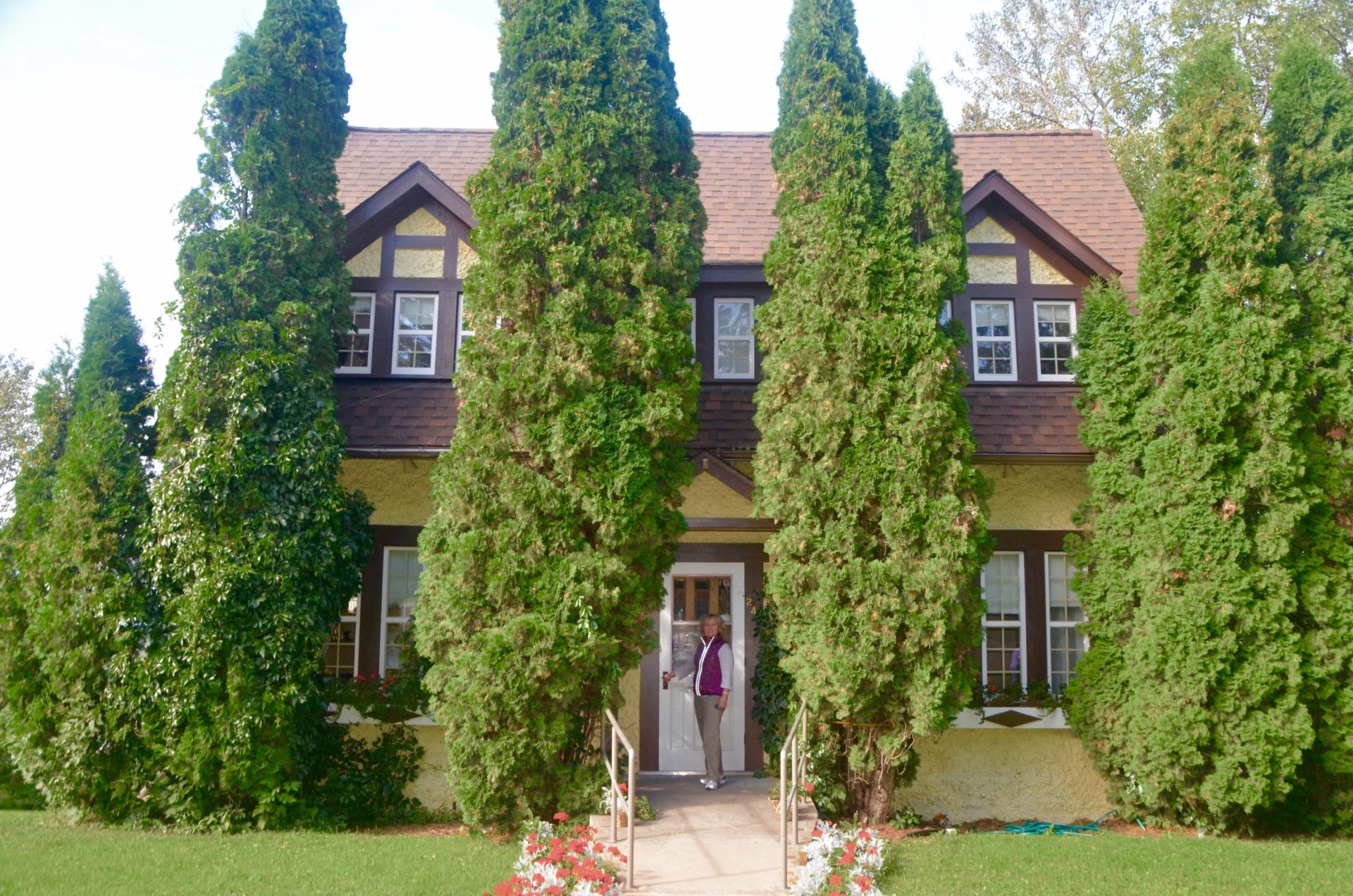
Admission is by donation and we were provided with a guided tour by the young lady on duty.
The first thing we learned was what an unsuccessful politician Diefenbaker was until he finally hit it big. He failed to win any of the first five elections he ran in, losing at every level – municipal, provincial and federal. When he finally won a federal seat in 1940 it was to be one of only 39 Conservative MPs out of 245 in the House of Commons. Here is a collection of Diefenbaker campaign memorabilia from those early days.
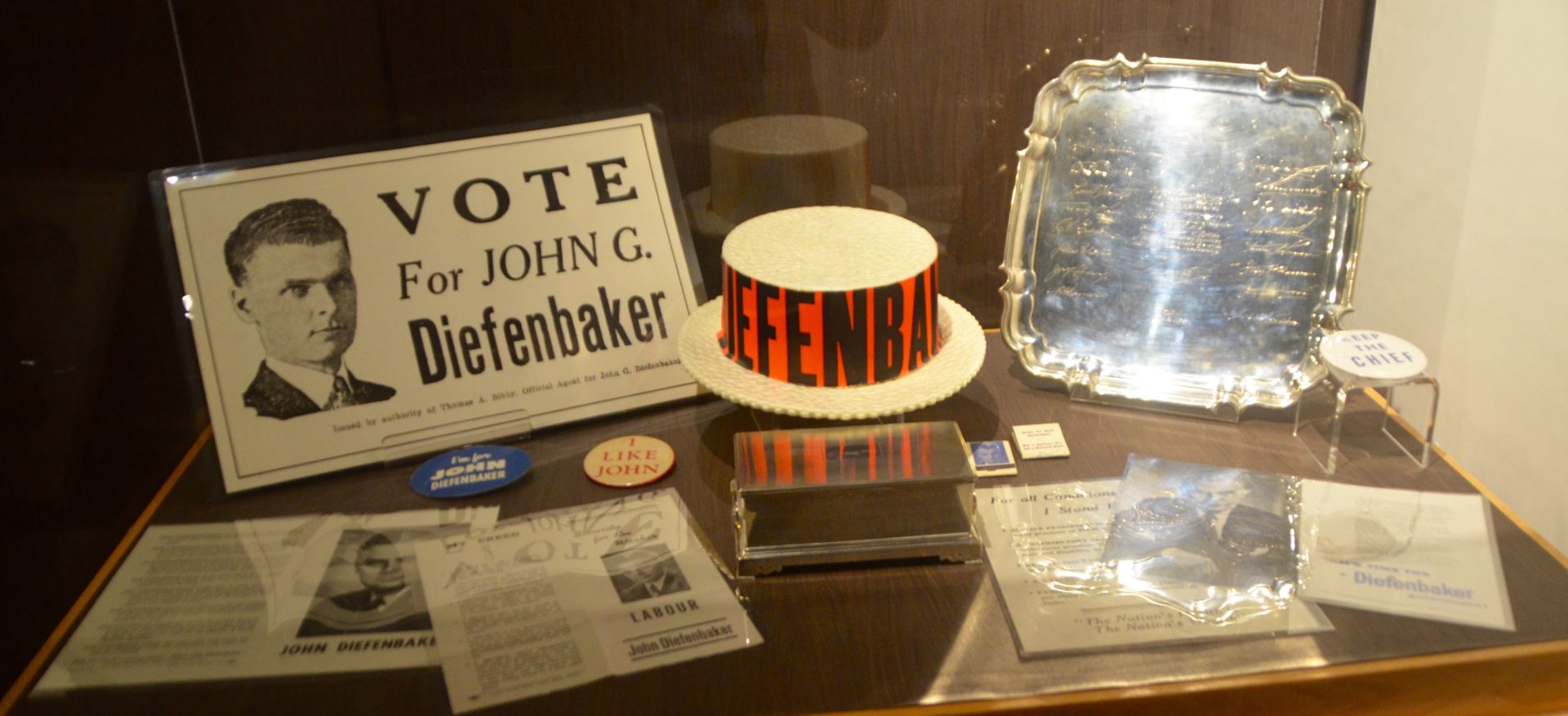
And a wall of campaign posters.
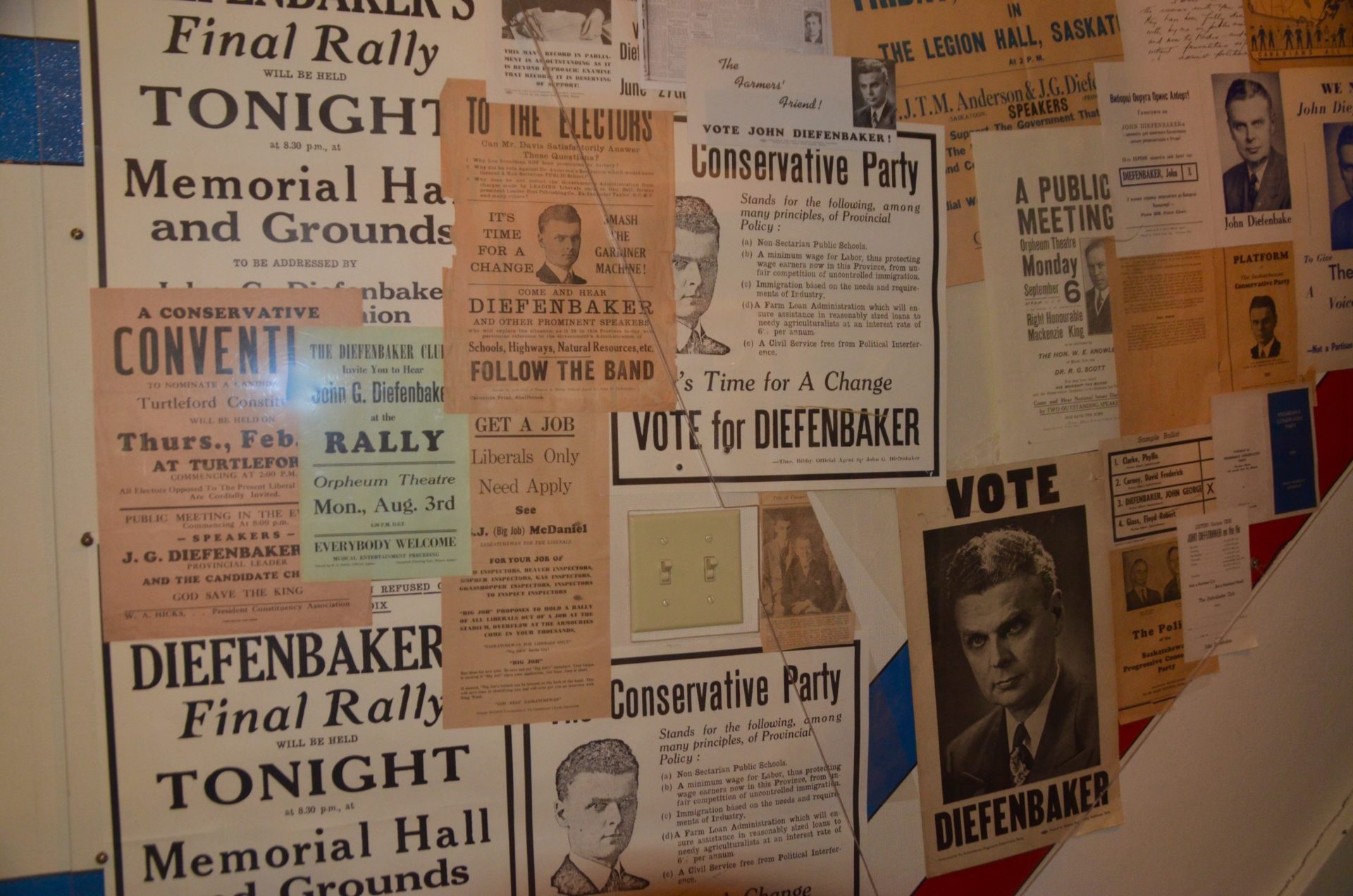
John Diefenbaker was a great admirer of Sir John A. MacDonald, Canada’s first Prime Minister and the man most responsible for bringing about the Canadian confederation. This was readily apparent from a number of items directly related to MacDonald, most notably his bed, which Diefenbaker bought and had extended a foot to accommodate his larger size. What is really strange about this is that Diefenbaker was a tee totaler, while MacDonald was a notorious boozer and no doubt slept off many of his drinking bouts in this same bed.
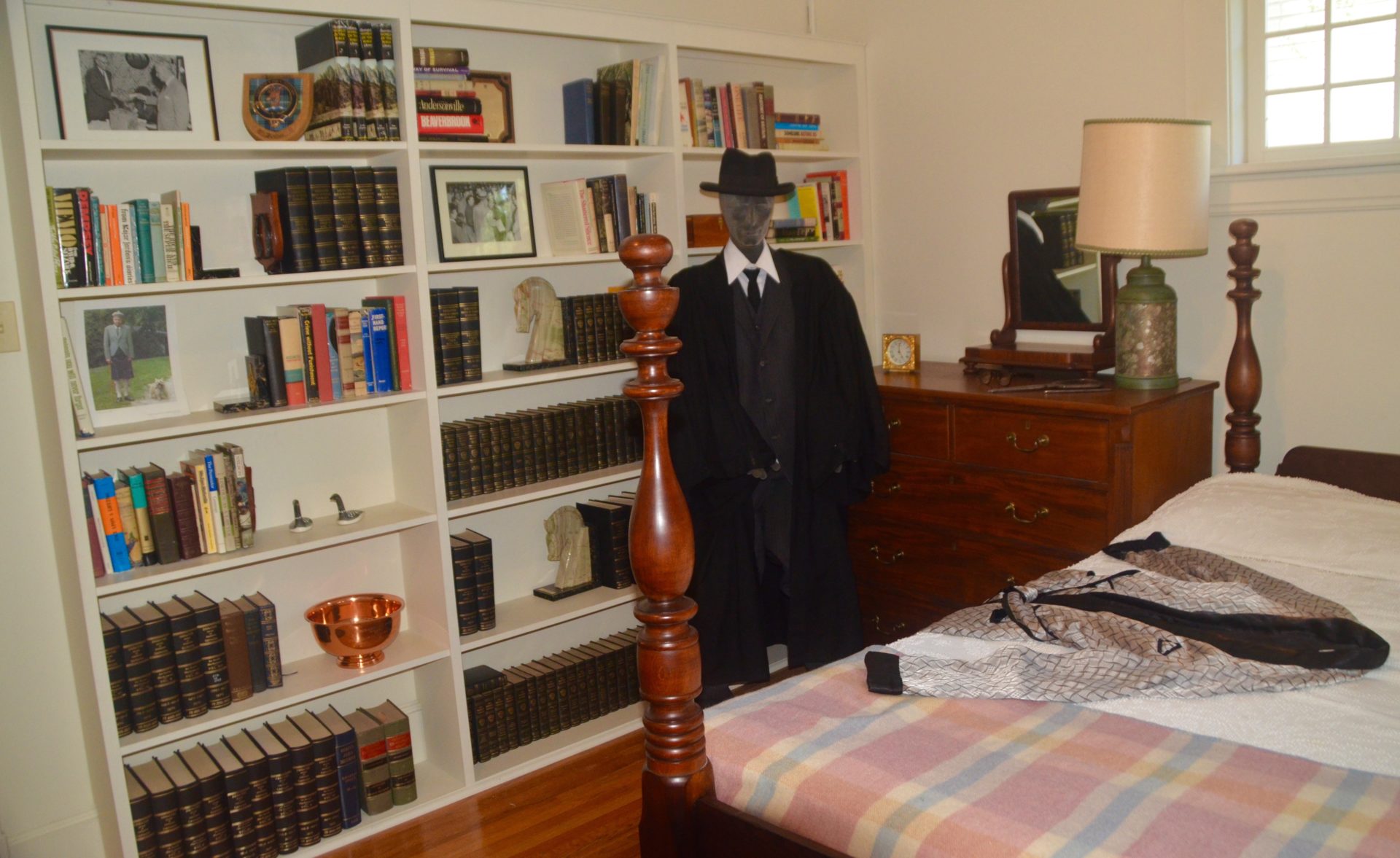
That’s Diefenbaker’s barrister’s gown on the mannequin. Whatever anyone thought of him as a politician, most contemporaries agreed that he was a superb court room lawyer, whether as prosecutor or defence counsel. Having served in both roles myself, I have great respect for his legal advocacy skills.
The furnishings of the home are exactly as they were when Diefenbaker and his second wife, Olive lived here, until his death. Over the living room settee, which was also owned by Sir John A., is this portrait of John and Olive.
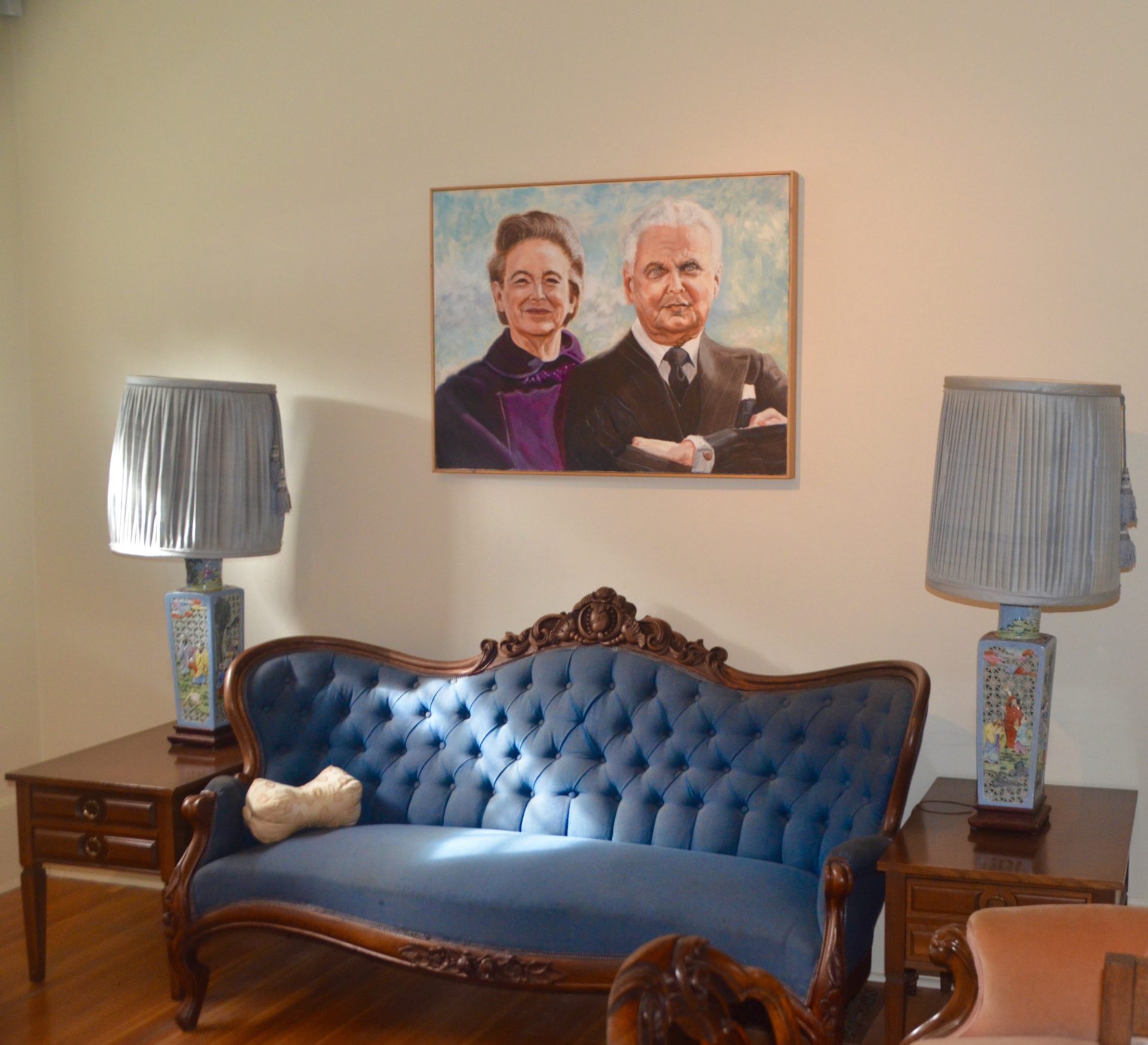
We were the only visitors and allowed to roam freely. In one of the upstairs closets Alison found this Nova Scotia tartan vest. Maybe he got it from John Buchanan.
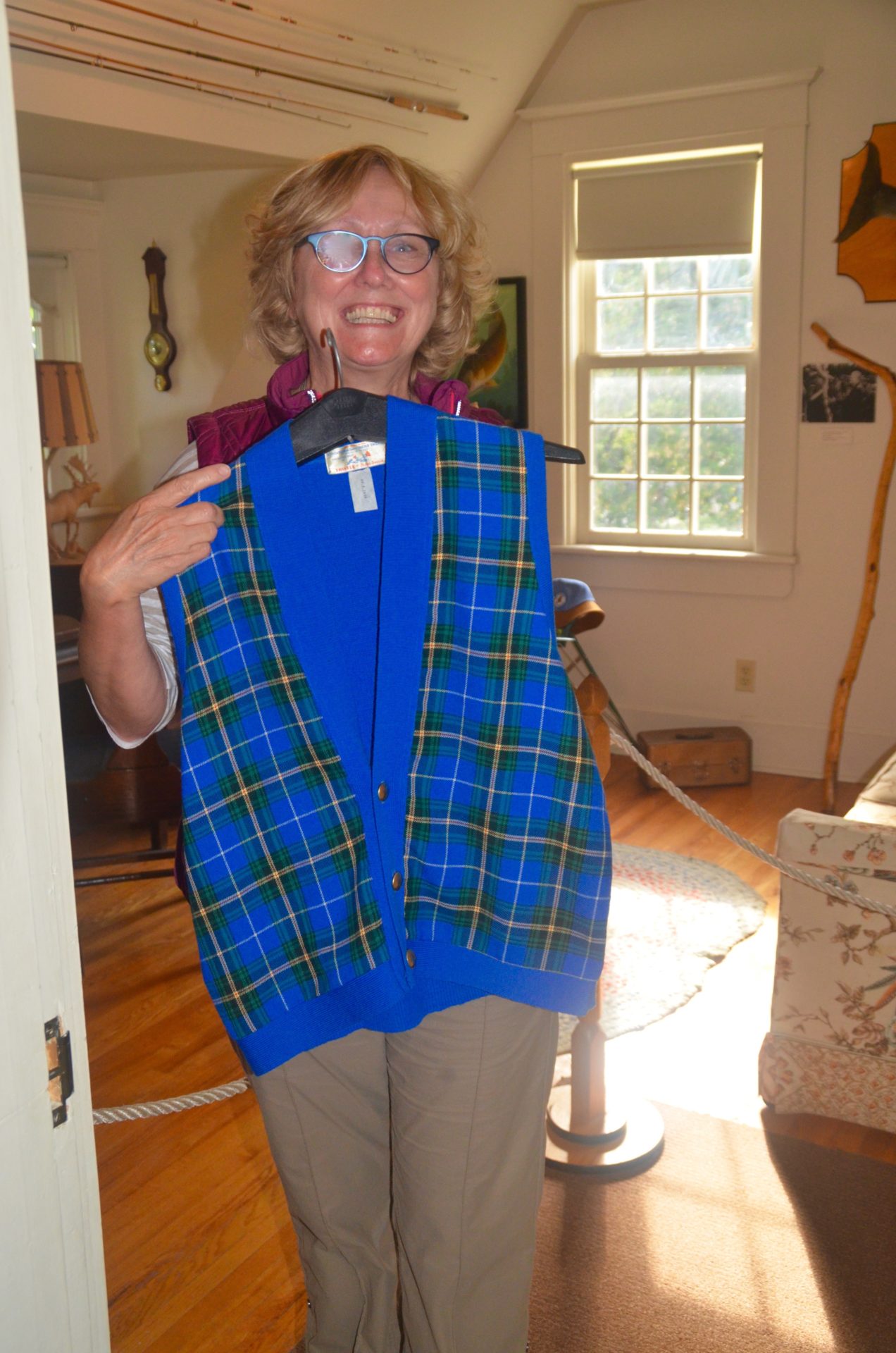
So in Prince Albert we learned bit about John Diefenbaker the man, but not a whole lot about the things he stood for and against that made him such a controversial figure. To learn about those we are headed back to Saskatoon.
The Diefenbaker Canada Centre
The city of Saskatoon is a vibrant hub of activity on the banks of the South Saskatchewan River. It is known as a centre of scientific and agricultural research, much of it taking place at the University of Saskatchewan. It is here that we can learn more about John Diefenbaker, the politician. After his death Diefenbaker bequeathed most of his papers and politically related material to the Diefenbaker Canada Centre which was constructed after his death on the Saskatoon campus. We are here on a quiet Sunday afternoon and have a chance to ponder the man’s legacy.
While he was a fiscal conservative, John Diefenbaker was anything but when it came to issues of equality and justice. It seems incredible now, but until he became Prime Minister, aboriginals were not allowed to vote in Canada. Diefenbaker rectified that ridiculous injustice as well as appointing the first aboriginal Senator, James Gladstone and the first female cabinet minister, Ellen Fairclough. He denounced South Africa’s apartheid policies so fiercely that it withdrew from the Commonwealth.
By far Diefenbaker’s most important lasting contribution was the passage of the Bill of Rights in 1960. For the first time, freedoms we take for granted were codified into written law. Every law of Canada was deemed to be interpreted from that time forward in the spirit of the Bill of Rights. It is true that a Liberal appointed Supreme Court of Canada seemed to go out of its way to diminish the accomplishment by interpreting it as just another statute. However, that lesson was learned by Pierre Trudeau, who made sure these same freedoms were later enshrined in the constitution as the Canadian Charter of Rights and Freedoms. While Trudeau gets all the credit, it was John Diefenbaker who first put it into action.
Here is a portrait of John Diefenbaker holding the Bill of Rights in the Diefenbaker Centre.
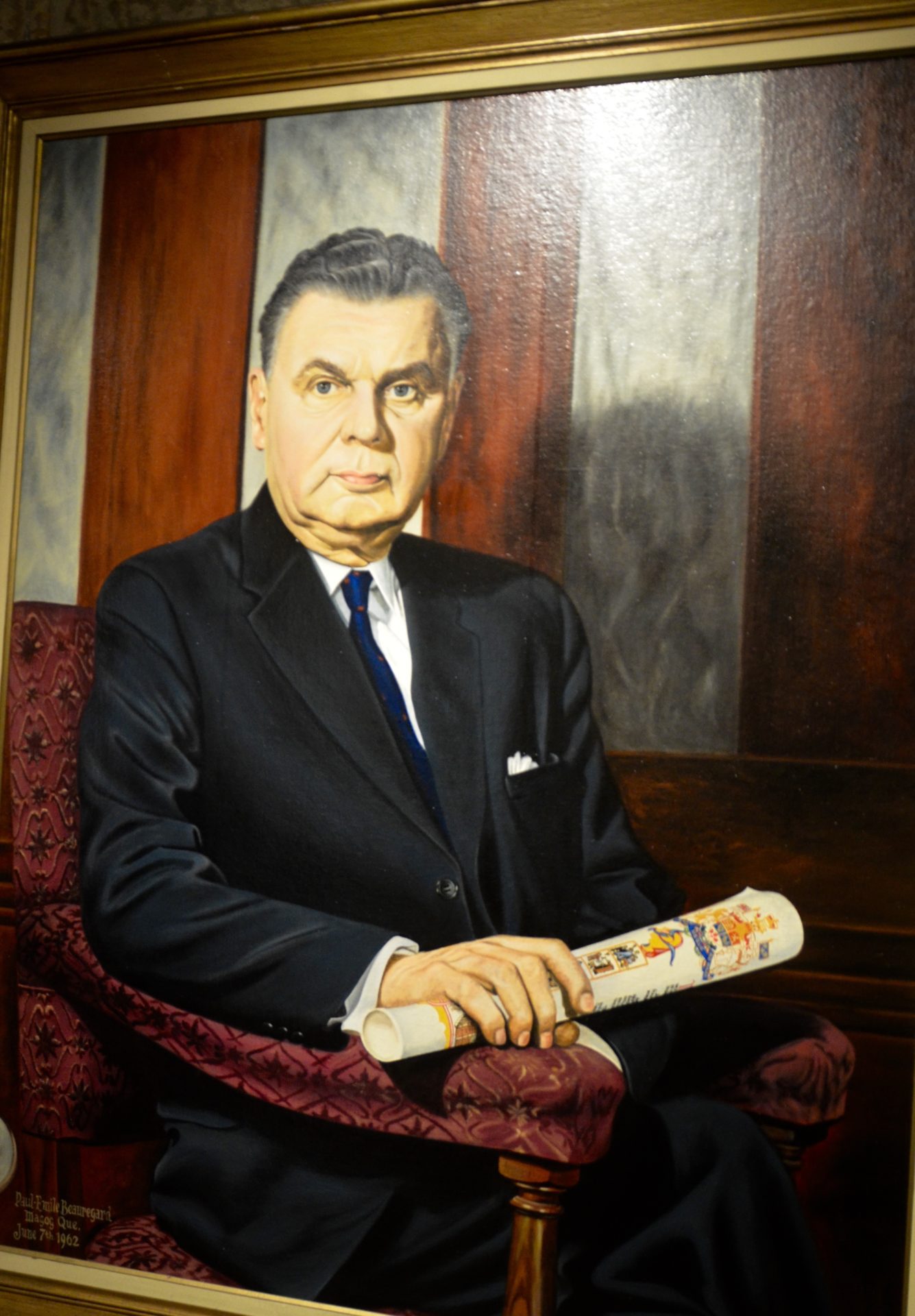
So what of Diefenbaker’s failures? There were a lot more perceived at the time than are considered as such today. One on which Diefenbaker was definitely on the wrong side of history was the flag debate. Despite being of German descent he was an anglophile to the bone and staunchly opposed the idea of replacing the red ensign with a new flag. This panel at the Centre illustrates the various designs that were proposed and I think most people today would agree that, in the end, we made a great choice.

On some others like the cancellation of the Avro Arrow fighter jet and the refusal to let Bomarc missiles be armed with nuclear warheads, inciting the fury of John Kennedy, were not so clear cut. If you asked Canadians today which party opposed nuclear weapons in Canada and which supported it, I bet most would say the Liberals were against and the Conservatives for. In fact, it was the opposite and Diefenbaker probably lost the 1963 election because of that opposition. John Kennedy was a cult like figure then and John Diefenbaker a funny looking fuddy duddy. We now know who was the better man.
The Diefenbaker Centre contains a replica of Dief’s Prime Ministerial office, complete with a statue of Sir John A.
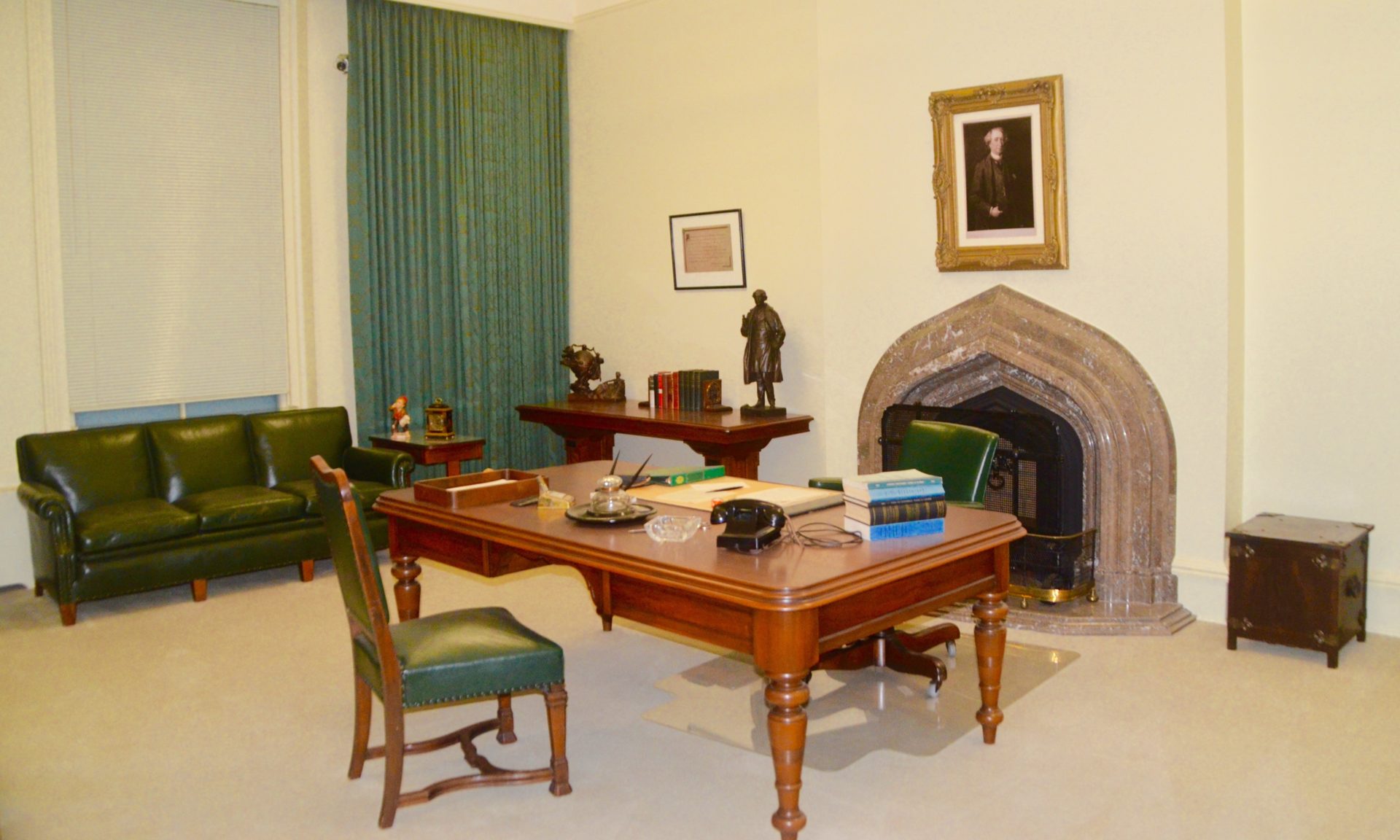
And a replica of the Cabinet room in the Privy Council Office. His chair is rather reminiscent of a throne and there were more than a few who thought he would like to be king.

Our last stop is just outside the Diefenbaker Centre where there is this great view of Saskatoon.
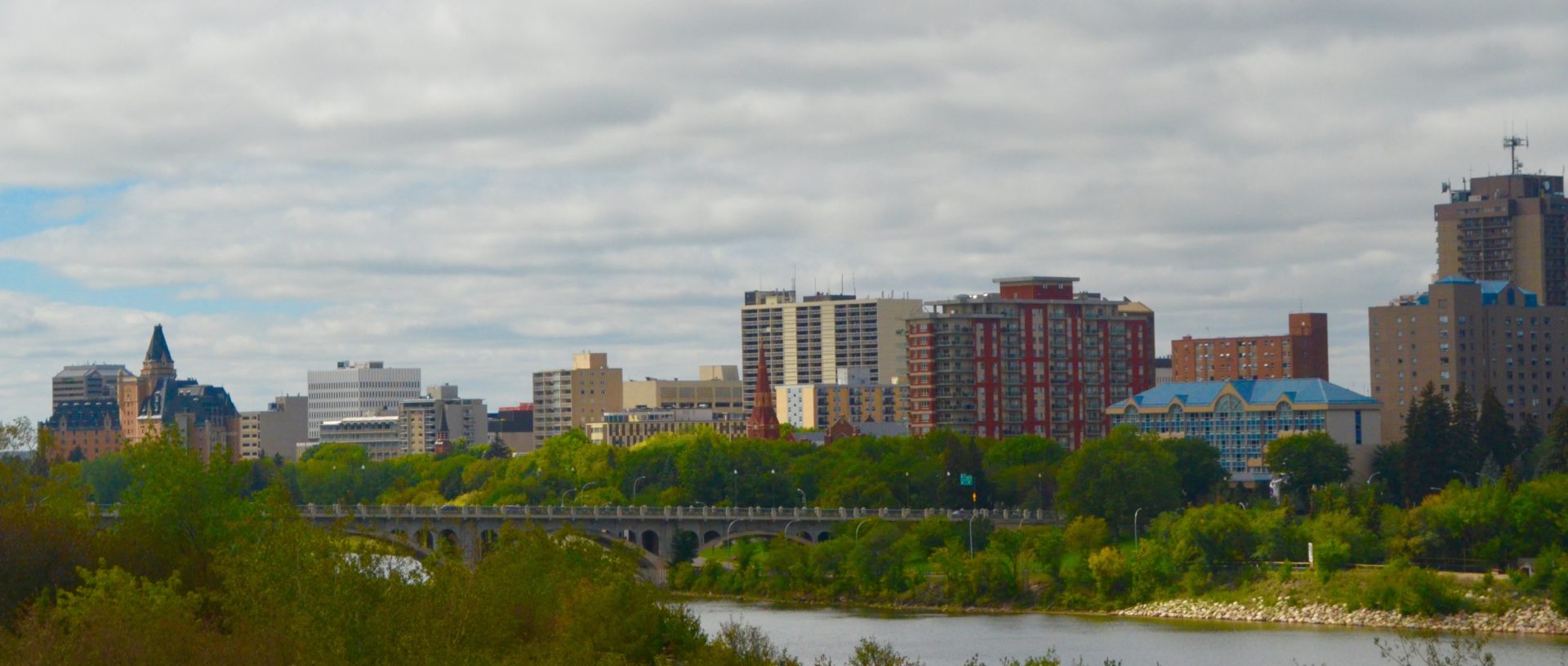
Here lies John Diefenbaker and his wife Olive. Alison gets to pay her respects one last time.
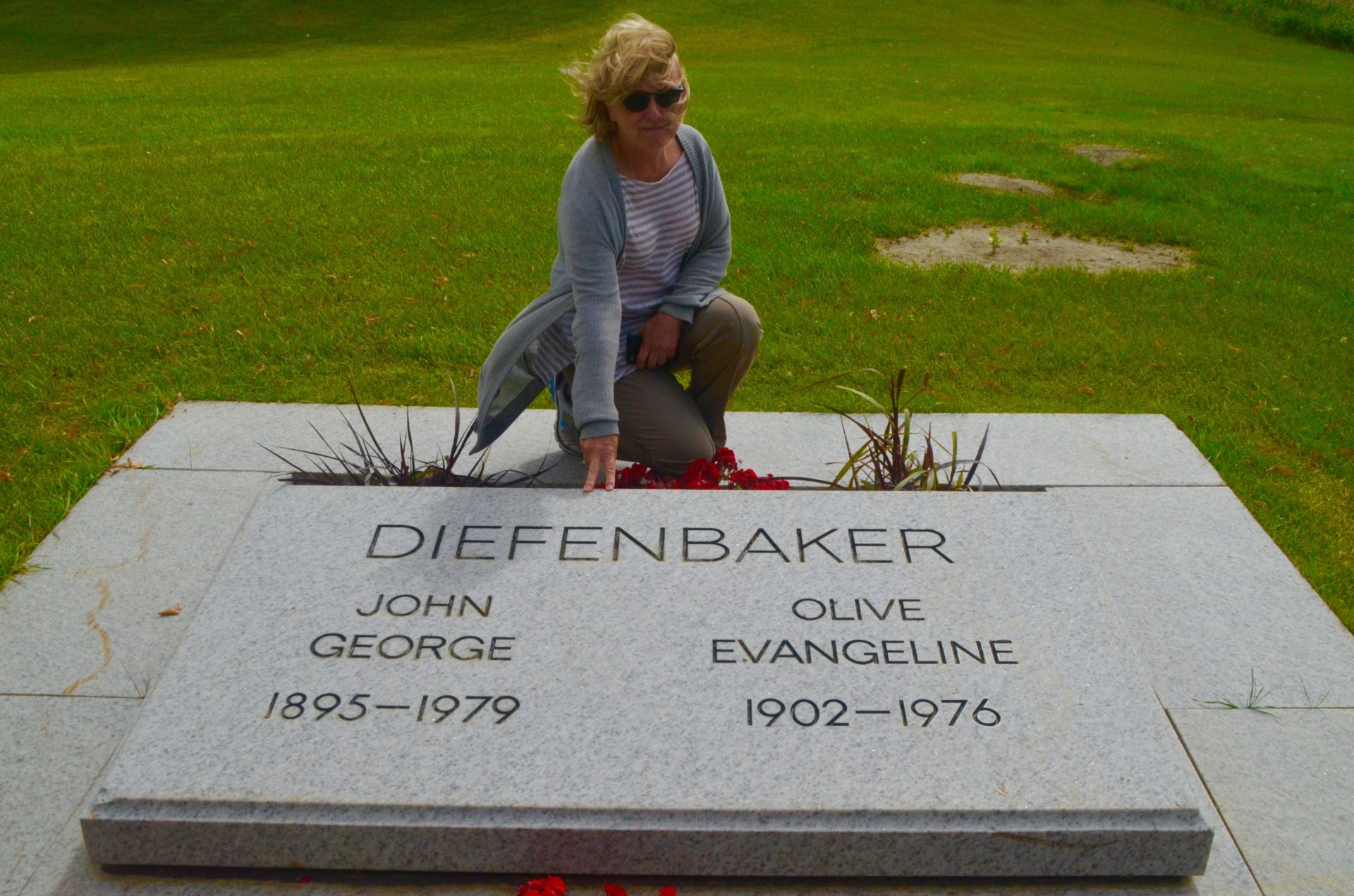
R.I.P. John Diefenbaker – a great and misunderstood Canadian.
Here is a link to a photo gallery of our entire Saskatchewan trip.

